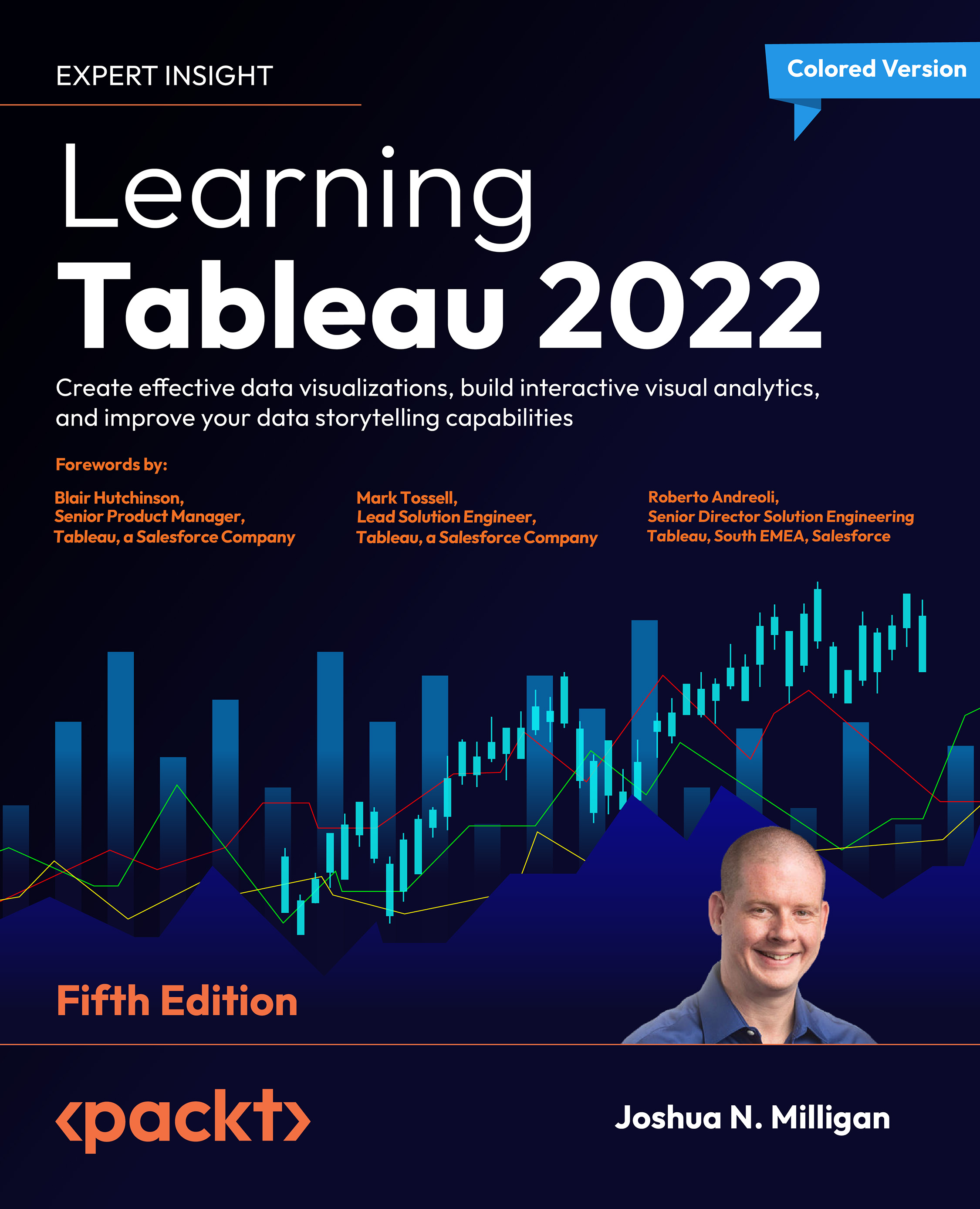So far, everything we’ve covered in this book has been focused on features of Tableau that work “out of the box.” And these features are very powerful! However, Tableau is also incredibly flexible, and you can extend the functionality greatly through extensions, custom scripts (such as Python or R), and even by integrating AI through Tableau CRM Analytics (formerly Einstein Analytics) in Tableau!
As in other chapters, we’ll cover both concepts and practical examples. Many of the more advanced examples will require setting up your environment to run external repositories, services, and platforms such as a web server or SDK (Software Development Kit). It is outside the scope of this book to provide in-depth instructions on how to set up these components and the exact steps may change over time.
Instead, you will be directed to the appropriate resources and documentation to set up any additional...



 Free Chapter
Free Chapter
